LED video walls have become the go-to display technology for live events, but the industry is far from reaching its full potential!
LED displays are everywhere! From billboards to ballrooms, it’s a technology that’s widely accepted… even expected.
Since LED displays are so common, manufacturers and designers are challenged to come up with unique ways of deploying them. Curves, corners, and other creative concepts continue to enhance audience experiences.
Here are a few big-picture design approaches plus the associated pros and cons …
Curves
Most LED manufacturers have products that curve and are fairly easy to source in major markets.
Convex curves are great for widening the perceived viewable area. This approach is especially effective when the audience can see the display from far away (trade show booths, large ballrooms, and entertainment stages are just a few examples).
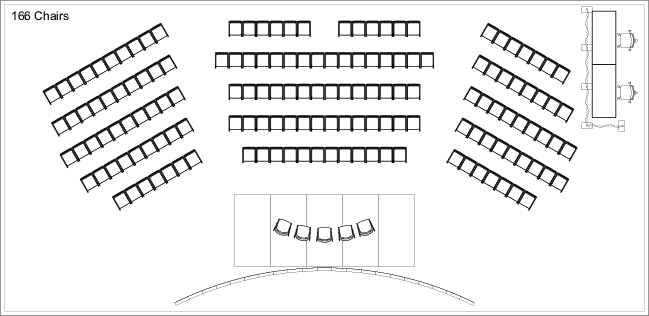
Concave curves create a more intimate feeling. Viewing angles are decreased, so content should be primarily in the center of the display. Some great uses for concave include temporary art exhibits, small theater-type presentations, and visually concealing upstage entrances.
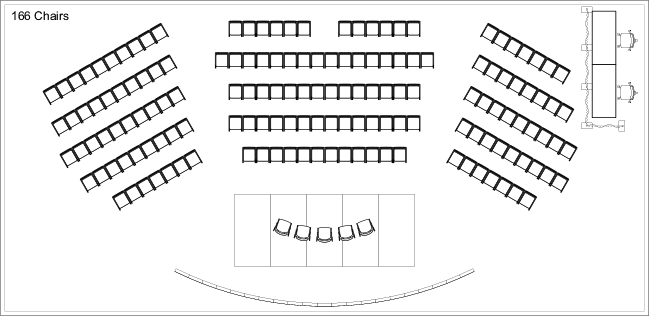
Combining convex and concave is a fun and creative way to utilize the benefits of both! Content development and placement become higher priorities depending on the audience and the experience you’re creating.
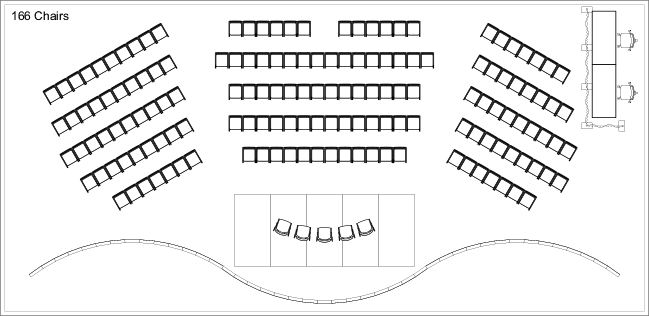
Angled mating surfaces (where tiles physically connect to each other) are common, but curvable frames (the actual structure of the tile) are a newer innovation. They result in a smoother image but present some challenges … especially when used in ground-supported situations.
Pro Tip: Depending on load specs, many displays can be assembled sideways, allowing designers to spec curves that lean toward or away from the viewing area.
Corners
0-10 degree joints are considered curves, whereas larger angles (90-degree being the most common) are considered corners. Corners are a little more unique and tougher to source.
Corners are great for creating columns (directional signage in large hallways and expo areas is a great application!), incorporating geometric angles, and masking ground-supported structures.
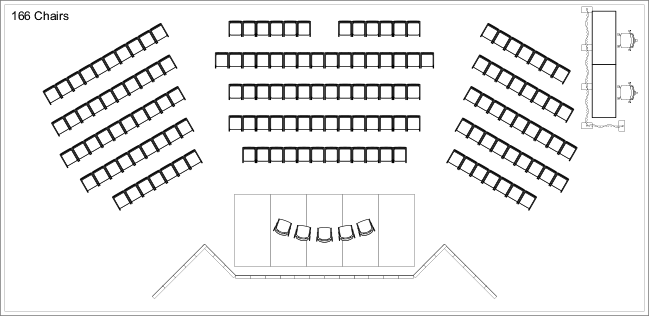
Pro Tip: Although 90-degree corners are the most common, other angles can be achieved with minor fabrication.
and More …
Single-pixel strips are a terrific addition to creative designs. These are often used as accents between larger displays, highlighting the edges of the stage (or individual risers on the stage), or to add visual interest underneath suspended trusses.
Facia on stages and risers is another creative use. Instead of soft goods (skirts) or custom-made hard panels, LED can change color/texture plus add branding potential too.
Pro Tip: Don’t forget to design content to include negative space (the area between displays). Like a moment of silence, content is more impactful when applied correctly.
Conclusion
LED video walls are here to stay, and we love it!
Combining technical and content creativity opens doors to design options that were unimaginable just a few years ago.
We’ll leave you with a few recent deployments to inspire your next event …


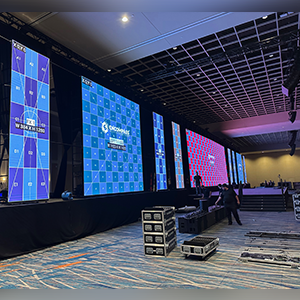
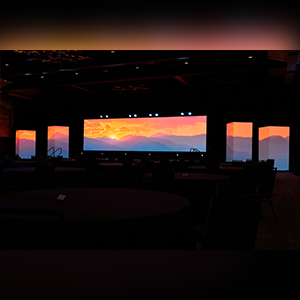
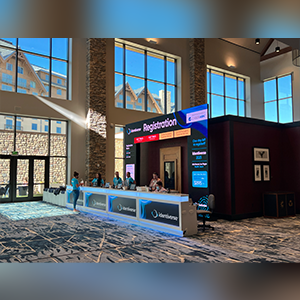
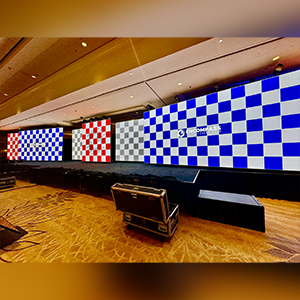
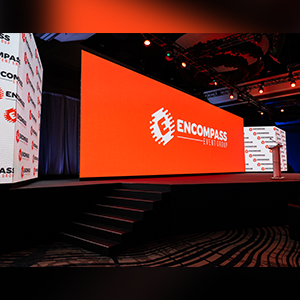
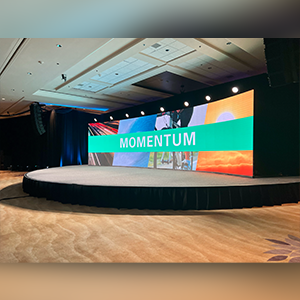
Our team has worked in broadcast television, touring entertainment, live sporting events, and countless convention facilities. The combination of unique backgrounds situates us perfectly to produce high-end and complex offerings.
We have technical design experience and a disciplined process that allows us to easily scale events and shift from in-person to virtual without angst. There isn’t much beyond our scope and we love the intensity of putting on events!
If you’re a planner working to create an event, seeking help with event technology, or simply want to learn more … we can help! Sign up below to receive our updates (we promise to keep your contact information secure and won’t “overshare”).

